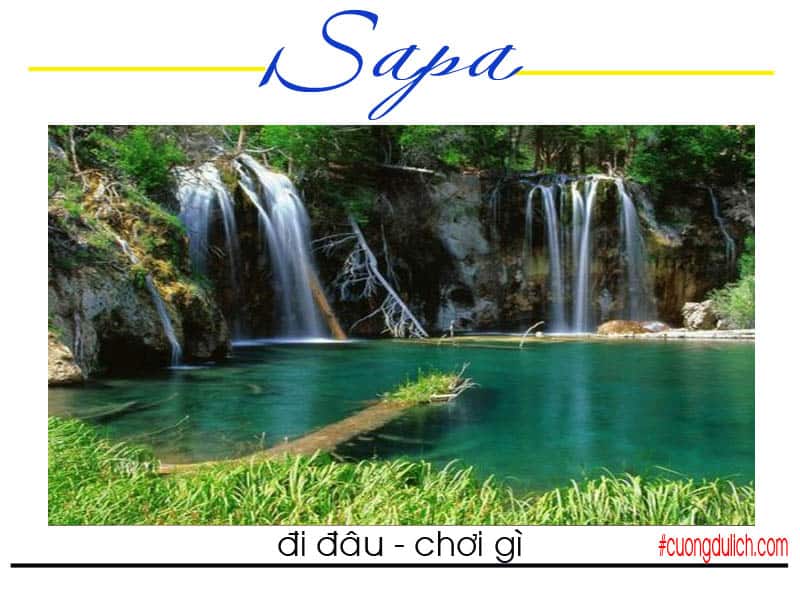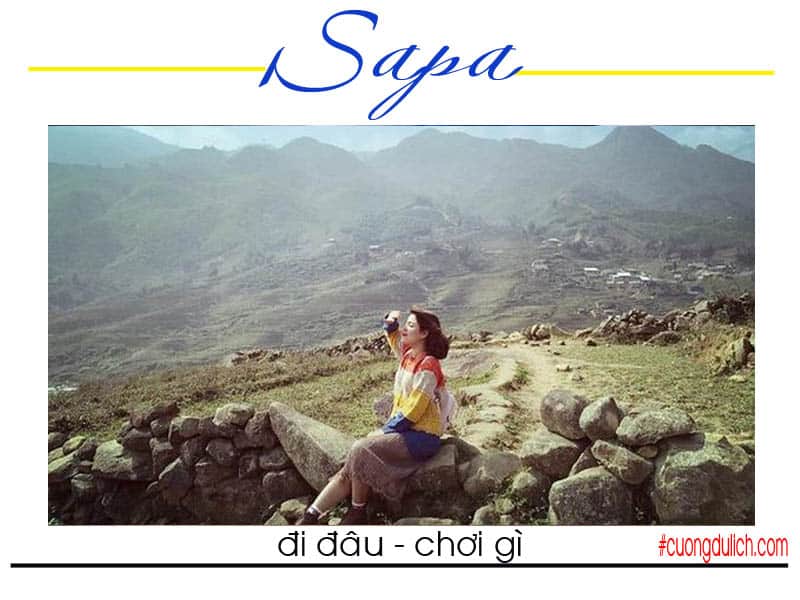Sapa – a quite familiar place but not everyone has had the opportunity to visit. Located in the Northwest of the country, Sa Pa holds many wonders of nature and people. The town in the clouds attracts tourists with its majestic mountains and unique experiences with the lives of ethnic minorities.
When visiting Sapa for the first time, many of you will surely choose Cat Cat village, Stone Church, Cloud Bridge, Silver Waterfall, or the legendary Fansipan peak… as the first destinations in your Sapa trip. So what about the other places, let’s explore the top 11 famous tourist spots in Sapa with Cuong Travel.
1. Cable car ride and Conquering Fansipan Peak – The Roof of Indochina
Fansipan is the highest mountain in the Indochinese Peninsula (3,143 m), located in the center of the Hoang Lien Son range. Although Fansipan is only 9 km southwest of Sapa town, it takes 6 to 7 days to conquer this mountain by foot. Alternatively, you can choose to take the cable car. The Fansipan cable car route started operating in early 2016, helping tens of thousands of tourists reach the Fansipan peak to admire, explore, and conquer the highest roof of Indochina.

2. Dragon Jaw Mountain
Dragon Jaw Mountain is located right next to Sapa town, 3 km away, and tourists can walk there. Standing on the top of Dragon Jaw Mountain, you can admire the panoramic view of Sapa, Muong Hoa Valley, Sa Pa, and Ta Phin hidden in the mist. On Dragon Jaw Mountain, tourists feel like entering a fairy garden, with clouds enveloping them, and colorful flowers covering the ground. Dragon Jaw Mountain is a dragon-shaped mountain in the majestic Hoang Lien Son range, located just behind the Stone Church in Sapa. It is considered one of the few beautiful and magnificent mountains in Vietnam with such a unique dragon head shape. From the foot of the Stone Church in Sa Pa to the top of Dragon Jaw Mountain, it is 1,800 meters above sea level, just over a kilometer long, but it takes about an hour to conquer this mountain.
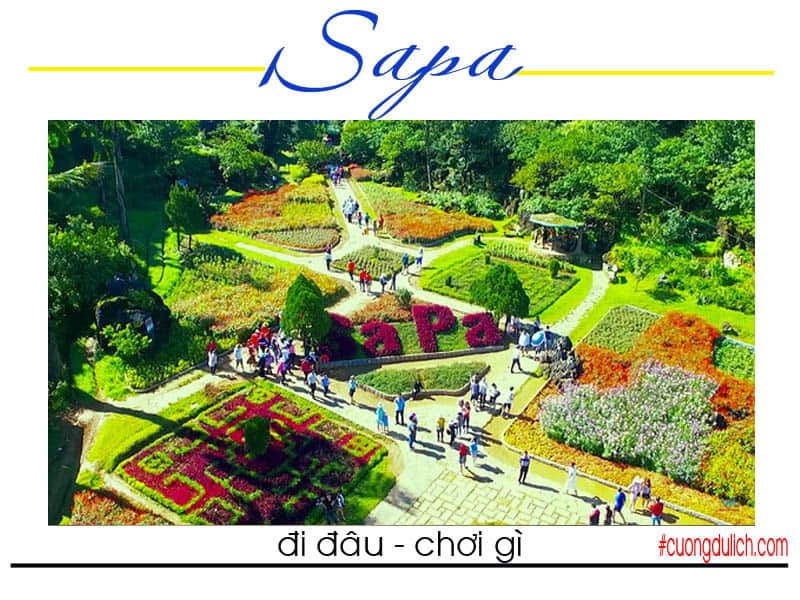
3. Sapa Ancient Church
Located in the center of Sapa town, the Stone Church of Sapa was built in 1895 and is considered the most intact ancient architectural landmark of the French people that remains. The church has been preserved and maintained, becoming an indispensable image when mentioning the foggy town of Sa Pa. The Stone Church of Sapa is the most intact architectural imprint of the French. This church is located right in the center of the Sapa tourist town. In front of it is a spacious stadium. Every day, people from different ethnic groups gather here in large numbers to buy, sell, and exchange goods.
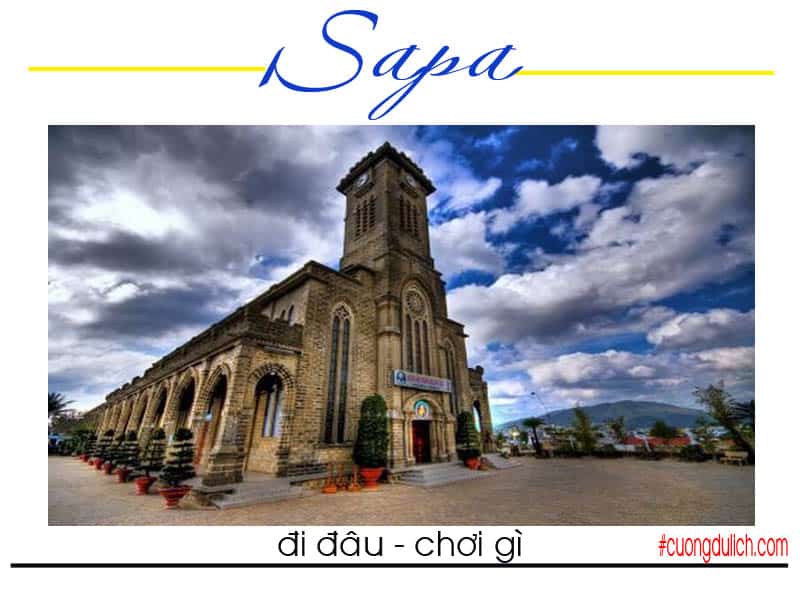
4. O Quy Ho Pass
Known as the most majestic mountain pass in the North, O Quy Ho Pass is one of the four great mountain passes in Vietnam, connecting the provinces of Lao Cai and Lai Chau with a length of nearly 50km. The pass is located at an altitude of 2,000m, winding around high cliffs and deep abysses. However, if you overcome your fear and climb to the top of the pass at nearly 2,000m, you will have the opportunity to admire the vast sky and floating clouds like a fairyland. That’s why it is also known as the Heaven’s Gate.
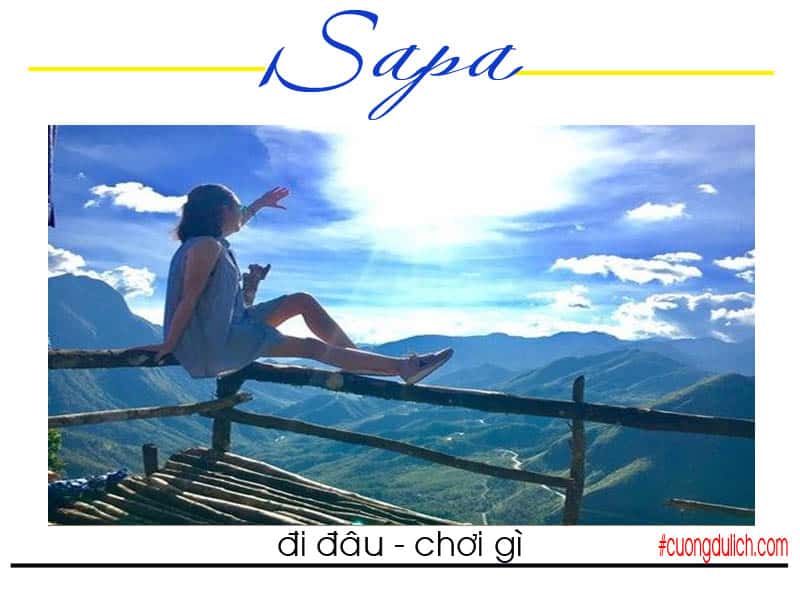
5. Thác Bạc – Đỉnh Đèo
From the town of Sapa, heading west about 12km on the way to Lai Châu, travelers will encounter Thác Bạc waterfall cascading down from a height of over 200m into the stream below the Ô Quy Hồ valley, creating a mountainous forest sound full of impressions. However, in the spring, travelers should consider before visiting Thác Bạc because the waterfall has very little water at that time. Just 3 km further from Thác Bạc, visitors will reach the landmark Đỉnh Đèo. Here, there is a stunning view of Fansipan, below is the solitary road leading to Bình Lư.

6. Cát Cát Village
Located at the foot of Hoang Lien Son mountain, Cát Cát Village is a beautiful village with simple and fresh natural scenery of terraced fields and small stilt houses in the Northwest mountains.
Here, they cultivate, raise livestock, and preserve traditional handicrafts such as brocade weaving, silver jewelry making, and bronze casting quite well. Cát Cát Village is considered one of the most interesting cultural tourist attractions that visitors cannot miss when visiting Sa Pa.
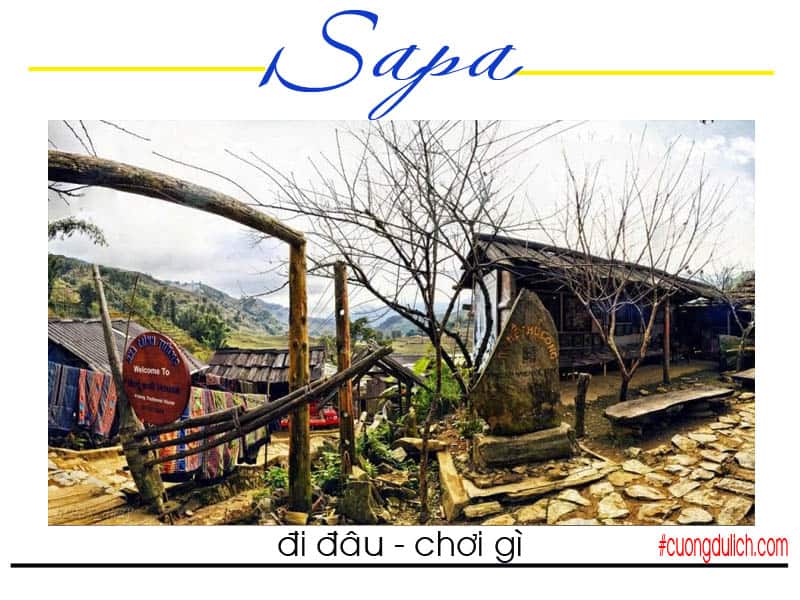
7. LAO CHẢI – TẢ VAN
Lao Chải – Tả Van is located in the valley, with the majestic Hoang Lien Son and Ham Rong mountain ranges on both sides, where a large number of ethnic people reside: H’Mong, Dao, Giay… Setting foot in the village, the first impressive sight that will leave you in awe is the vast terraced fields spreading across the hillsides, with fresh, peaceful, and surprisingly serene air.
8. Hang Tiên
For a long time, Hang Tiên has been one of the famous scenic spots in Sa Pa known to many. With its charming natural scenery, Hang Tiên is likened to a miniature Ha Long Bay nestled along the gentle Chay River between towering cliffs.
To reach Hang Tiên, visitors must travel by boat upstream on the Chay River for about 6km, with pristine forests on both sides, creating a cool and fresh climate.
Here, you will encounter small streams cascading down from above like silk ribbons, creating a dreamy, misty atmosphere. These streams, known as the Fairy Streams, have sculpted the rock walls into beautiful shapes such as floating lotus flowers, elephants bowing to drink water, or eagles soaring with outstretched wings.
9. Sa Pa Ancient Rock Field
Sa Pa Ancient Rock Field is an archaeological site with engraved patterns and ancient characters, located in the Muong Hoa Valley in the three communes of Hau Thao, Su Pan, and Ta Van in Sa Pa district. The rock field covers an area of 8 km² with nearly 200 rock blocks, bearing witness to human presence here since ancient times. Here, there are strange patterns on the rocks with various shapes: terraces, human figures, roads, writing characters, etc. There are circular grooves resembling sun symbols, images of male and female copulation – symbols of fertility, and many other intriguing lines. However, the exact time of its appearance, the additions it underwent, deciphering the meanings of the symbols, have not been conclusively determined and are still only hypotheses.
10. Ban Ta Phin – Ban Ta Van
About 17km east of the center of Sapa town, Ta Phin is a small village of the Red Dao ethnic group known for its famous brocade craft. When visiting Ban Ta Phin, you can also explore the nearby Ta Phin cave, admire the beautiful natural scenery, and discover the rich cultural heritage of the local people.
Ta Van is characterized by vast rice fields stretching endlessly, simple earthen-walled houses, and narrow paths covered with bushes and grass. Visiting Ta Van Giay village, the oldest village in Ta Van, located within the Hoang Lien National Park, allows you to truly immerse yourself in nature, listen to the sounds of flowing streams, distant forest birds, rustling leaves in the wind, and explore the traditional culture of the Giay ethnic group.
Most tourist spots in Sapa require an entrance fee, including Ta Van. The entrance fee to Ta Van village in Sapa is around 75,000 VND per adult. However, the ticket control is not very strict.
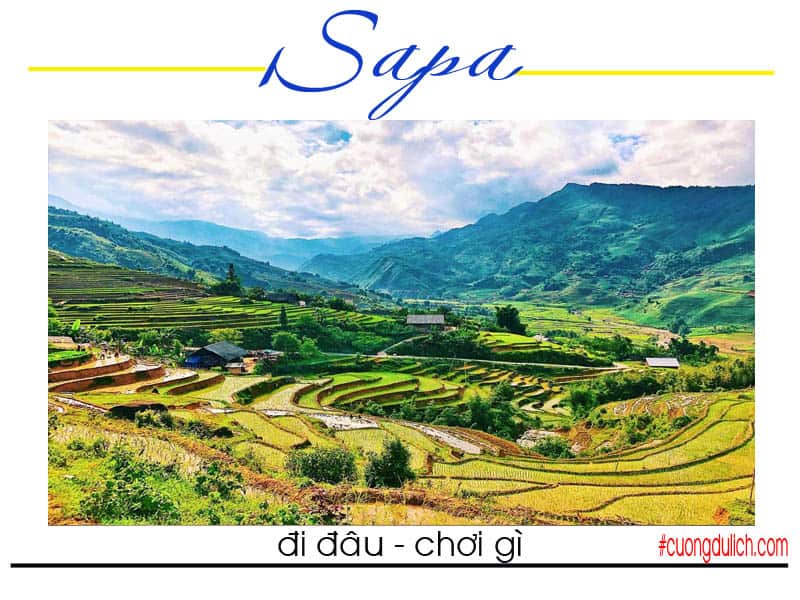
11. Sapa Love Market
Sapa Love Market is a market that is not really a market, it is the meeting place of young men and women from Dao and Hmong ethnic groups. The Love Market in Sapa, according to the elders’ stories, used to only take place once a year after the Lunar New Year.
The Love Market is no longer just an empty land in front of the gate at the beginning of the year, but now it is held at a fixed location. Visitors to Sapa can visit the Love Market at the square in front of the Stone Church. This is also the central location for the lively cultural activities of Sapa town during festivals.
The Love Market in Sapa now takes place regularly every Saturday in the square in front of the Stone Church. Every Saturday evening, people gather at the square, which is busier than usual. Around 6 – 7 pm on Saturdays, tourists visiting Sapa can come to the church area, the square to witness and participate in the famous activities of the Sapa Love Market.

To be honest, Sapa is still a destination not everyone has the opportunity to visit, especially for travelers from the south due to the long distance. But regardless, traveling to Sapa is still a wonderful destination for unforgettable experiences in life. Sapa is beautiful in every season, so why wait any longer to plan a few days away from the city, heading to the most beautiful northwest mountains in Vietnam.

